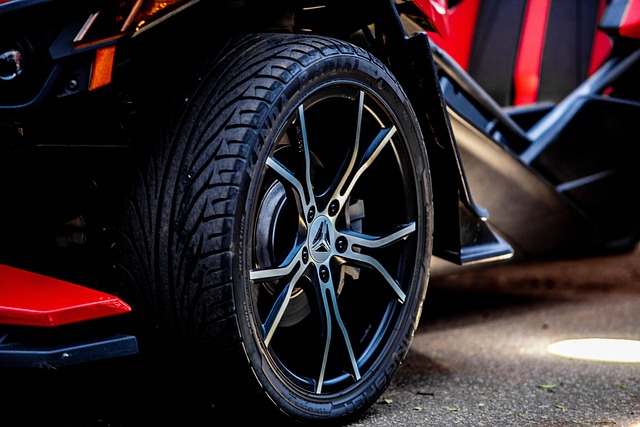Looking to register your car in California? This comprehensive guide walks you through every step, from understanding key requirements for car registration to navigating the process at the DMV. We delve into crucial aspects like VIN verification using necessary documents and vehicle inspections with clearances. By following these steps, ensure a smooth registration experience. Additionally, learn post-registration considerations for your new California vehicle.
- Understand the Requirements for Car Registration in California
- Gather Necessary Documents for VIN Verification
- Conduct a Vehicle Inspection and Obtain necessary Clearances
- Visit the DMV to Register Your Vehicle
- Post-Registration: Important Steps and Considerations
Understand the Requirements for Car Registration in California

Before diving into the registration process, it’s crucial to understand the requirements for car registration in California. The state mandates several key steps, including accurate vehicle identification number (VIN) verification. This step is vital as it ensures that your vehicle matches the details on record with the Department of Motor Vehicles (DMV). Accurate VIN inspection plays a significant role in preventing fraud and ensuring road safety.
In addition to VIN verification, you’ll need to gather essential documents like proof of ownership, valid insurance, and current registration from another state if applicable. Also, be prepared to pay the registration fees. California offers various options for this, including mobile vin inspection services that provide convenience by coming to your location for a faster and more hassle-free experience.
Gather Necessary Documents for VIN Verification

To register your car in California, you’ll need to go through a VIN (Vehicle Identification Number) verification process. Before you begin, gather all necessary documents related to your vehicle. This includes the title, registration certificate, and proof of insurance. Additionally, you’ll require the vehicle’s VIN, which can typically be found on the driver’s side door jamb or in the car’s owner’s manual. For a streamlined process, consider utilizing mobile vin verification or a mobile vin inspection service to conveniently obtain these details.
Ensure that all documents are up-to-date and accurate. In California, it’s crucial to have valid paperwork to avoid any delays or issues during registration. The state’s Department of Motor Vehicles (DMV) will cross-reference the VIN with their records to ensure the vehicle’s authenticity and compliance with regulations. So, be prepared with all the required documents for a smooth vin inspection.
Conduct a Vehicle Inspection and Obtain necessary Clearances

Before registering your car in California, it’s crucial to ensure that your vehicle meets all safety and emissions standards. This involves a thorough vin verification process, which includes both a vin inspection and obtaining any required clearances. Start by scheduling a mobile vin inspection if you prefer convenience; many professional services offer this option, allowing them to come to your location. During the inspection, a qualified technician will check for any outstanding recalls, verify the vehicle’s identity using the unique 17-character Vehicle Identification Number (VIN), and ensure all systems are in proper working order.
This step is critical as it helps prevent unsafe vehicles from hitting California’s roads. Once your vin inspection is complete and any necessary clearances obtained, you’ll be one step closer to registering your car smoothly and efficiently. Remember, adhering to these procedures not only ensures compliance with state laws but also promotes road safety for all drivers.
Visit the DMV to Register Your Vehicle

To officially register your car in California, a visit to the Department of Motor Vehicles (DMV) is an essential step. Bring all necessary documents, including proof of ownership, vehicle identification number (VIN) verification, and any completed forms. The VIN, unique to each vehicle, plays a crucial role in the registration process, ensuring accuracy and preventing fraud. Consider using a mobile vin verifier or undergoing a mobile vin inspection for convenience—this service allows you to verify your VIN without visiting a DMV office.
Once at the DMV, you’ll need to present valid identification, such as a driver’s license, and pay the required registration fees. The staff will check your documents, perform a vehicle history report, and confirm that your car meets all safety standards. This process may take some time, but it’s a vital step in ensuring your vehicle is legally registered and ready for California roads.
Post-Registration: Important Steps and Considerations

After successfully registering your vehicle in California, there are several crucial steps to ensure a smooth ownership experience. One critical aspect is completing the Vehicle Identification Number (VIN) verification process. This involves checking the VIN accuracy and ensuring it matches the make, model, and year of your car. You can facilitate this through a mobile VIN verification or inspection service, making it convenient for owners who prefer a quick, on-demand check.
Additionally, keeping accurate records of all registration-related documents is essential. Storing digital copies of your registration certificate, proof of insurance, and vehicle maintenance records in a secure location, perhaps through a dedicated app, can prove invaluable in the event of loss or damage to the original paperwork. Regularly updating these records with every service or modification ensures compliance and simplifies future registration renewals.
Registering a car in California involves several straightforward steps, from understanding the requirements to conducting a vehicle inspection and visiting the DMV. Ensure you have all necessary documents, including proof of ownership and insurance, for a smooth process. VIN verification is a crucial part of this process, ensuring your vehicle’s unique identifier is accurately recorded. After registration, stay up-to-date with annual renewals and maintain proper clearances to avoid any legal issues. Following these steps ensures your car is legally registered and ready to hit the California roads.



